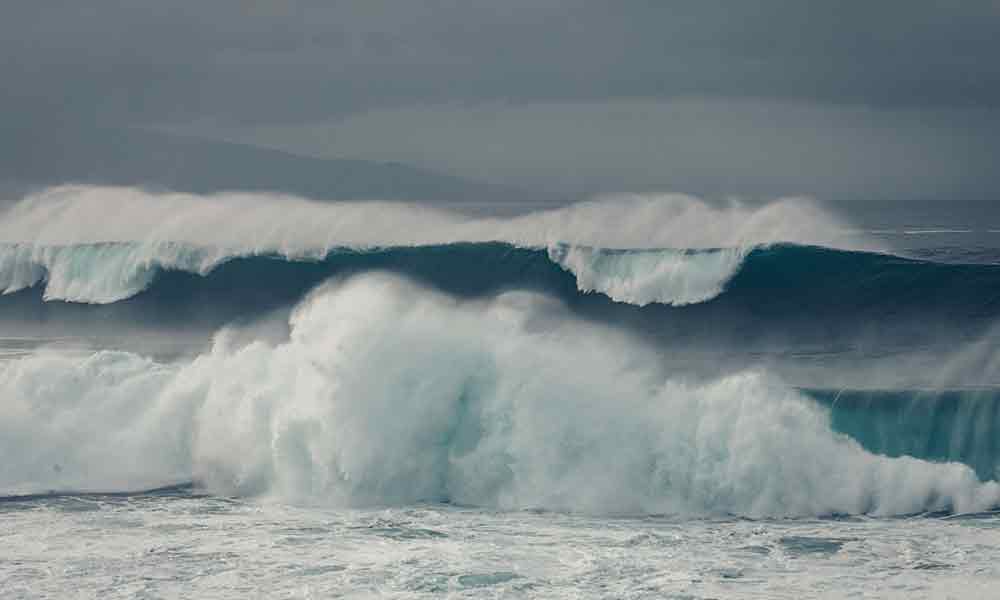The term “closeout” is one you’ll hear a lot in surfing.
It refers to a specific type of wave and it’s something you’ll want to avoid as a surfer.
But what is a closeout wave, how can you avoid them, and what are the surf spots where they appear most frequently?
What is a Closeout Wave?
A closeout wave is a wave that breaks all at once and doesn’t provide the surfer with many options for riding it.
The wave may form and look like it’s about to tube, only to collapse or “shut down” as some surfers refer to a wave that closes out.
Closeout waves occur frequently on beach breaks, during low tides, and in shallow water when there is not enough water to support the amount of wave energy that is breaking.
Closeout waves are usually defined specifically as when the wave sets and breaks parallel to the shore all at once.
Surf Spots with Lots of Closeouts
Closeout waves are usually quite common at Wedge in Newport Beach, California, Puerto Escondido (referred to as the “Mexican Pipeline”), and the Narrabeen Carpark in Australia.
You’ll find closeout waves everywhere, though, and that’s why it’s best to do your research and make sure you know what you’re letting yourself in for before you grab your board and head to the beach.
Why do waves close out?
The primary reason waves closeout is because of the swell direction.
When a swell direction is too direct such as swell direction that is originating from the west that hits the California shoreline, you may get a lot of closeouts resulting from that swell direction.
The same thing happens on the east coast when there is too much east in a swell direction.
Other reasons that may result in waves closing out include:
When There Are Multiple Swells In The Water
You can see this on the west coast during the change of seasons when there are swells running from both the north and the south.
The waves from both swells meet close to shore, combining, and can result in a closeout.
Backwash & Refraction From Breaking Waves
Backwash is the natural return of the water to the open ocean after waves break. Backwash is not the same as a rip current which is much move severe movement of water.
When there is a lot of swell and wave energy breaking the backwash sometimes collides with the incoming wave and can create spectacular effects and/or closeouts.
Here is an extreme example of what backwash looks like:
Refraction, which is when wave energy bounces off of objects such as jetties, can also contribute to closeouts.
You can read more about refraction here.
The Number One Culprit of Closeouts: Swell Direction
The basic direction from which a swell originates can cause more closeouts than not.
This is usually the result of the direction a beach faces in relation to the open ocean which means that a particular break will favor one direction of a swell over another.
For example: D Street in Encinitas, California is known to be a summer beach break that picks up the south swells.
Waves do break at D Street in the winter, but there is a higher percentage of closeouts in the winter because of the swells that originate from the north during the colder months.
Can you surf a closeout?
Closeouts are not the waves surfers are looking for.
If you’re caught surfing a closeout wave, there are a few ways you can do:
Deal With It
The first option is just to tuck, charge, and drive through the barrel.
It’s definitely not the easier option, nor is it recommend for surfing beginners, but it could get you through.
A Flickout
The flickout is a cool trick to learn and will get you out of those closeout waves.
Just do a hard bottom turn and flick your surfboard over the surface of the wave.
A Bail
To bail, just kick the surfboard out from under you as the wave closes and fall backwards.
Try to land flat, ensuring that you don’t get dragged over the falls.
A bail is definitely not the safest of options, and it’s not recommended if there are other surfers nearby.
Straighten Out
To straighten out, you just turn toward the shore and ride forward, navigating any obstacles (such as other surfers) and staying in control of your surfboard.
How do you know if a wave will close out?
You want to start to size up the waves before you paddle out.
You want to see where waves are closing out or breaking too fast for you.
Once you are out in the water take note of the back of the waves when they are breaking.
You will be able to see if the waves are closing out and which ones give you room to surf.
Also, look to see if other surfers that are dropping into the waves are kicking out at the end of the wave (not a closeout) or are left in the soup after the wave has broken and are padding back into the lineup (most likely a closeout they didn’t make).
Our Final Note About Closeouts
There is the obvious closeout when the entire beach gets walled up by a rogue wave that breaks all at once, but not all waves that look like closeouts are actually closeouts and you really don’t know that until you paddle hard, drop in and go for it.
You can get some of the best barrels of your life on waves that you thought would be closeouts.
Other times, a closeout will be the reason you develop a new trick or advance an existing technique to deal with that wall of water that just minutes ago was not makeable.







